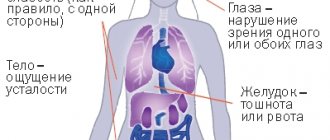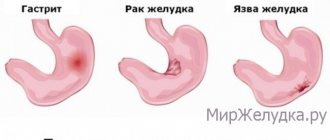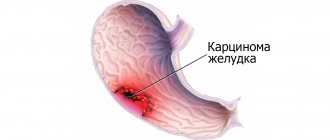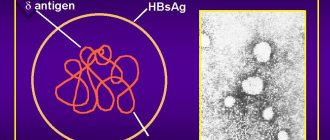Syphilis in a child is a dangerous disease that is caused by a spirochete bacterium that affects the skin, nervous and skeletal systems, as well as up to 80% of organs. A child can become infected with this sexually transmitted disease in utero from a sick mother or during the birth process. The causative agents of the disease penetrate the placental barrier and can provoke pathological changes in the development of the fetus.
What is congenital syphilis
When Treponema pallidum is transmitted from mother to child in utero, congenital syphilis develops. If this disease is detected in the mother based on the results of tests before birth, then the baby is prescribed preventive antibiotic therapy after birth. They do this even in cases where there are no external manifestations of infection.
According to statistics, congenital syphilis occurs most often in children born from mothers with a primary or secondary form of the disease. Early latent infection is also dangerous. Children are affected by Treponema pallidum, provided that the pregnant woman did not receive treatment, she was prescribed an inadequate regimen, or the therapy was completed earlier than 1 month before birth.
According to doctors, until the 16th week, Treponema pallidum does not affect the child in any way. This is due to the fact that the fetus at this stage is not mature enough, and upon contact with antigens, antibodies are not formed in its body. Therefore, therapy is prescribed immediately after syphilis is detected. If treatment is started in the first trimester, infection of the fetus can be prevented.
The maximum risk of developing congenital syphilis in newborns will be in cases where women exhibit clinical signs of the disease during pregnancy.
Treponema pallidum can enter the fetus in the following ways:
- through the umbilical vein in the form of an embolus;
- through the lymphatic slits located in the umbilical vessels;
- through the placenta with the mother's bloodstream, provided that its integrity has been previously damaged by toxins of pathogenic microorganisms.
When the causative agent of syphilis enters the fetus, specific septicemia begins to develop. Bones, organs of the central nervous system, lungs, spleen, liver, blood vessels, and endocrine glands are affected. The child develops intercellular diffuse infiltration, connective tissue grows, vascular walls change, and miliary silophomas form. Lesions can lead to intrauterine death or death of the infant after birth.
Comment! Information that syphilis can be congenital appeared several centuries ago during an epidemic of this disease. At the beginning of the 16th century, it was noticed that the disease affected not only adults, but also children, including newborns.
Women with syphilis may give birth to a child with a congenital form of the disease; signs of intrauterine infection may appear immediately after birth
Treatment
Syphilis has been well studied by doctors. In addition, it is very sensitive to antibacterial drugs of the penicillin group, such as:
- bicillin;
- ecmonovocillin.
Medicines are introduced into the body by injection. The problem is that some children have congenital allergies to these medications. In this case, the baby should be treated with erythromycin, cephalosporin and tetracycline. Also, for children older than six months, bismuth is added to complex therapy. Please note that the dosages of all drugs are calculated only by a doctor.
Since syphilis of any form exhausts the body and weakens the immune system, vitamin complexes and immunomodulators should be used. Not only does this add vitality to the baby, it also simplifies the treatment process - the body’s own defenses are activated. At the same time, hygiene rules must be strictly observed. With syphilis, the skin suffers greatly, so the lack of regular cleansing will lead to additional suffering and intensive spread of the infection.
If the course of treatment is started in the first month of the baby’s life, the disease will most likely go away without a trace. If therapy is started at a later age, there may not be any results.
Classification of congenital syphilis
In accordance with ICD 10, there are 2 types of congenital forms of the disease. Depending on the period of appearance of the first symptoms of the lesion, early and late syphilis are distinguished. The clinical manifestations of the disease correspond to the secondary and tertiary periods of the acquired disease in adults, respectively.
With early congenital syphilis, signs of infection become noticeable within two years after birth. Some children are born with characteristic symptoms. But syphilis can also occur in a latent form without the appearance of characteristic clinical signs.
In the late congenital form of the disease, symptoms of the disease appear after 2 years. Most often, children encounter their appearance during puberty, which begins at 12-16 years of age.
Doctors also identify latent congenital syphilis. With this form of the disease there are no skin symptoms. Patients may have only isolated bone pathology or damage to the skeletal system in combination with hepatosplenomegaly.
Late congenital syphilis
The presence of pale treponema in a child over 2 years of age indicates the development of a late form of congenital syphilis. The diagnosis is established by characteristic symptoms and test results taking into account the medical history.
This diagnosis is considered as one of the possible ones in patients with the following pathologies:
- unexplained deafness;
- progressive mental retardation;
- keratitis.
However, the results of standard non-treponemal studies in such patients may be negative. They are recommended to do tripotemic tests, for example, fluorescent antibody binding.
Most often, signs of late congenital syphilis appear at 14-15 years of age. Doctors regard it as a relapse of an infection suffered in infancy, or a manifestation of a disease that was previously asymptomatic.
The symptoms of late congenital infection are similar to tertiary acquired syphilis. Patients develop gummous ulcers involving the hard palate, nasal septum, and periosteum. The disease is also characterized by asymptomatic neurosyphilis, but there is a risk of developing juvenile paresis and tabes of the spinal cord.
Early congenital syphilis
Treponema pallidum begins to affect the fetus from the 16th week of pregnancy. If left untreated, they cause irreversible changes in the child's body. In almost 35% of cases, refusal of antibiotic therapy leads to pregnancy ending in stillbirth.
Immediately after birth, some babies show signs of the congenital form of the disease, they develop syphilitic pemphigus
Reliable signs of early congenital syphilis most often appear in the first 3 months of life. 70% of infants with this diagnosis are affected by:
- leather;
- mucous membranes;
- The lymph nodes.
In almost 80% of children, Treponema pallidum negatively affects the condition of the liver, spleen, and bones. There are also infants whose eyes are affected.
Important! According to medical observations, the pathomorphosis of congenital syphilis has changed in recent years. This affected both the clinical picture of the infection and laboratory parameters.
The early form of the disease often manifests itself as internal hydrocephalus and the syphilitic form of leptomeningitis. With these diagnoses, children exhibit the following symptoms:
- lethargy;
- monotonous crying;
- frequent regurgitation;
- causeless screams;
- convulsive symptom.
But the manifestations of the disease can be erased, so special importance is given to diagnosis. It is carried out even in cases where there are no signs of fetal infection.
Manifestations of congenital syphilis include papular rashes in the mouth, around the nose, and in places in contact with diapers. The child may develop generalized lymphadenopathy.
Fetal damage
Often, early congenital syphilis causes the development of fetal pathologies. In the first months of pregnancy, the infection cannot be transmitted to the child, since active placental blood circulation has not yet been established. However, pathological changes in a woman’s reproductive system often cause malnutrition (hypotrophy) and metabolic disorders in the fetus. In 60-70% of cases this leads to intrauterine death and spontaneous abortion.
Starting from the 20th week of pregnancy, Treponema pallidum is able to penetrate the baby’s circulatory system, causing specific pathological changes in the body. From this point on, fetal syphilis can be diagnosed in the case of premature birth or stillbirth if specific signs are present:
- the size and weight of fetal syphilis differ from the standard ones to a lesser extent;
- symptoms of maceration are observed (skin detachment in layers, pathological joint mobility, brain melting, collapse of the skull);
- widespread small cell infiltration of most internal organs;
- sclerotic tissue changes;
- detection of a significant number of spirochetes in the internal organs.
Morphological changes in congenital fetal syphilis: symptoms from internal organs are presented in the table below.
| Organ | Pathomorphological changes |
| Lungs. | “Pneumonia alba” is a specific infiltration of the pulmonary septa, exfoliation of the epithelium of the alveolar sacs. The lung tissue is grayish-white in color and lacks airiness. |
| Liver. | Hepatomegaly: the liver is enlarged, dense, brownish-yellow, subject to fibrosis - sclerotic changes. It is possible to detect widespread foci of necrosis. |
| Spleen. | Dense, increased in size. |
| Kidneys. | The cortical layer is affected, functional underdevelopment of the tubules and glomeruli of the kidneys is observed. |
| Gastrointestinal organs. | Ulcerations, flat infiltrates of the mucous and submucosal layer of the digestive tube. |
| Heart. | It is the last to be affected. Necrotic areas may appear, and foci of leukocyte infiltration are detected. |
| Endocrine glands. | Focal or widespread cellular infiltration of the adrenal glands, pancreas, pituitary gland. |
| CNS | Signs of impaired blood circulation in the brain, possibly the appearance of gumma of the medulla oblongata or midbrain. |
Diagnosis of congenital syphilis
If pale treponema is detected in the body of a pregnant woman, she is prescribed treatment and taken under special control. The newborn baby is carefully examined immediately after birth. He undergoes dark-field microscopy or immunofluorescent staining of mucous membranes and skin. At the same time, non-treponemal blood tests are done.
In case of positive results of serological tests or the presence of external signs of syphilitic lesions, infants are prescribed:
- spinal puncture with CSF analysis, during which the number of cells, protein, VDRL is calculated;
- complete blood count with determination of platelet count;
- X-ray examination of long bones;
- liver tests.
Other examinations are also recommended; their list depends on the clinical picture observed in children with probable congenital syphilis. Doctors may order a chest x-ray, ophthalmologic evaluation, neuroimaging, and auditory brainstem imaging.
Children with congenital syphilis develop osteoporosis, long tubular bones acquire a characteristic saber shape
Diagnosis based on the results of serological nontreponemal tests in infants is difficult. Transplacentally transferred maternal antibodies can be detected in their body. Even in the absence of infection, the result may be positive.
The triad of congenital syphilis is one of the main criteria for diagnosing the late form of the disease. It includes:
- Hutchinson incisors;
- interstitial (parenchymal) keratitis;
- deafness, which is associated with damage to the auditory nerves and structures of the inner ear.
Patients rarely present with all the likely signs of late congenital syphilis at once. Most often, one of the symptoms is identified. Some doctors include syphilitic gonitis in the list of manifestations of the disease - this is inflammation of the synovial membrane of the knee joints without damage to the cartilage tissue.
A characteristic sign of the disease is saber-shaped shins and forearms. They are formed due to osteochondritis suffered in early infancy. Outwardly, this manifests itself as a crescent-shaped bend of the bone.
Comment! Syphilis often leads to miscarriage, stillbirth, or severe malformations that are visible even without a thorough examination.
Late syphilitic lesion in children
Clinical signs of this form manifest themselves no earlier than 4-5 years of a child’s life. According to statistics, patients most often experience symptoms of this form at the age of 14-15 years.
In many children with a late variant of the pathology, signs of the early form of syphilis are asymptomatic. Others exhibit typical pathomorphological changes (deformation of the brain or facial skull, saddle-shaped nose).
In general, the clinical picture of the disease does not differ from tertiary syphilis. Children and adolescents experience multiple multiple organ disorders, visceropathy, diseases of the nervous system and endocrine glands.
Specific symptoms that reliably indicate that a congenital syphilitic lesion has developed in a child include:
- parenchymal keratitis (severe clouding of the cornea, lacrimation, photophobia);
- dental dystrophy (hypoplasia of the incisors, the presence of crescent-shaped and lunate grooves on the molars);
- labyrinthitis (deafness caused by dystrophic lesions of both auditory nerves).
Possible late signs of syphilis include gonitis (chronic inflammation of the knee joints), periostitis and osteoperiostitis, “saber-shaped” shins, saddle nose (the nostrils protrude significantly forward due to deformation of the skull bones), buttock-shaped skull, dystrophy of molars, various lesions of the nervous system (mental retardation, dysarthria, hemiparesis, tabes dorsalis and Jacksonian epilepsy).
Is congenital syphilis curable?
Treponema pallidum is highly sensitive to antibiotics. With timely initiation of therapy, you can completely get rid of this disease. But immunity to Treponema pallidum is not developed.
To treat congenital syphilis, antibiotics are prescribed in the maternity hospital. After preventive therapy, tests are performed and the little patient is registered with the hospital until complete recovery. Observation must last for at least 5 years.
For children with characteristic clinical signs of syphilis, antibiotics are prescribed in the maternity hospital; the sooner treatment is started, the higher the likelihood of recovery without negative consequences
If a pregnant woman received the necessary therapy during pregnancy, and the baby was born without signs of the congenital form of the disease, then he may be prescribed a single dose of antibiotics. If preventive treatment has not been carried out, then you need to be tested for syphilis monthly during the first 3 months after birth, and then six months later. In cases where the result of all tests is negative, the child is considered healthy.
For early congenital syphilis, specific treatment is recommended; the sooner it is started, the higher the likelihood of recovery and the absence of complications in the future. Children under 1 year of age are prescribed only penicillin preparations without combinations with other drugs. If a late form of the disease is detected, doctors recommend longer therapy. Most adolescent patients are prescribed several courses of antibiotics intermittently.
Whether the infection has been cured can be determined by the results of non-treponemal serological tests. If they show a seronegative result, or the antibody titer decreases by more than 4 times, then the patient is considered healthy. But he is recommended to be tested for syphilis periodically at regular intervals. This will help to detect a recurrence of the infection in time if it occurs.
Current approaches to therapy
The main method of antimicrobial therapy for syphilis remains long-term and systematic administration of therapeutic doses of penicillin derivatives:
- water-soluble - benzylpenicillin (potassium, sodium salt);
- medium duration - novocaine salt of benzylpenicillin, Bicillin, Procainepenicillin;
- high duration - BBP (dibenzylethylenediamine salt of benzylpenicillin).
The preferred method of maintaining a constant therapeutic concentration of an antibiotic in the body is its regular intravenous or intramuscular administration. When taken orally, the drug is absorbed into the blood much worse. If a child is diagnosed with syphilitic damage to the nervous system, injections of the drug should be combined with its endolumbar administration, as well as pyrotherapy (creation of artificial hyperthermia), which improves the passage of penicillins through the blood-brain barrier.
If the child is individually intolerant to penicillin antibiotics or has a history of allergic reactions, alternative treatment regimens with Erythromycin and other macrolides, as well as tetracycline derivatives, are used. The use of cephalosporins is not recommended due to possible cases of cross-allergy. Also contraindicated for monotherapy are aminoglycosides (effective against Treponema pallidum only in very high dosages that are toxic to children) and sulfonamides (the pathogen shows high resistance to them).
The prognosis of the disease is largely determined by the timeliness of seeking medical help. Early screening diagnosis of sexually transmitted pathology in a pregnant woman helps prevent infection of the fetus, and treatment of congenital syphilis with effective antibiotics significantly reduces the risk of complications.
As a result of intensive antimicrobial therapy, most children with congenital syphilis recover completely by the end of the first year of life. However, advanced damage to most internal organs in the late form of the disease can have serious health consequences.
Clinical guidelines for congenital syphilis
When pallidum treponema is detected in an infant’s body, treatment is immediately prescribed. The doctor selects a treatment regimen and determines its duration depending on the state of health. In the absence of clinical signs of infection, monosymptomatic and latent forms of syphilis, antibiotics are administered for 20 days. In case of confirmed damage to the central nervous system, the manifest course of the disease, or the mother’s refusal to perform a lumbar puncture on the newborn – 28 days.
Along with antibiotic therapy, specific treatment is also prescribed depending on the clinical manifestations. Atropine and glucocorticoids are recommended for children with interstitial keratitis. Treatment is carried out under the supervision of a pediatric ophthalmologist. For sensorineural hearing loss, glucocorticosteroids are prescribed.
Diagnostic tactics
It consists of carrying out the following activities:
- Simultaneous examination of both mother and child.
- It is not recommended to take blood for serological studies in women 14 days before and the same number after childbirth;
- It is not advisable to take blood for serological studies from the fetal umbilical cord in the first 14 days after birth, since protein lability and instability of the colloidal component of the serum may be observed during this period.
- When performing serological studies of mother and child, it is necessary to use a complex of certain serological reactions, for example, the Wasserman reaction, RIF and others.
- It should be remembered that a positive serological reaction in a child may be due to passive transfer of antibodies. However, gradually, over the course of several months after birth, such antibodies may disappear, and test results will become negative.
How is congenital syphilis treated?
Prevention of congenital syphilis
To prevent damage to the fetus by Treponema pallidum, doctors prescribe appropriate tests for all pregnant women. They are taken three times, once in each trimester.
Attention! Three-time examination allows us to detect even those cases of infection that occurred after pregnancy. It also increases the likelihood of detecting a latent form of infection.
If a positive result is obtained, treatment should be started as early as possible. If a pregnant woman receives specific therapy before the 16th week, the child can be born completely healthy.
The maximum risk of developing a congenital form of syphilis is in those children whose mothers became infected or experienced an exacerbation of the disease during pregnancy
If syphilis is detected late, there is a possibility that the mother will recover, but the fetus may become infected before treatment is started. In this case, after birth, manifestations of congenital syphilis may be observed. Prophylactic treatment is prescribed to children whose mothers have not completed the prescribed course of antibiotic therapy or started receiving drugs after 32 weeks of pregnancy.
Causes of pathology
Congenital syphilis (unfortunately, the symptoms are not shown in the photo) develops when a microorganism called treponema pallidum enters the fetus through the umbilical vessels, which can also get there through the lymphatic gaps from a mother with syphilis.
The unborn child can be infected if the mother is infected even before pregnancy, and this can happen at any stage of pregnancy. Pathological dysfunctions in the fetal organs are detected at approximately 5-6 months. In other words, during formation.
Consequences of congenital syphilis
Negative consequences at the birth of a baby whose body is infected with Treponema pallidum can occur at any age. In a child with syphilis, the liver, spleen, meninges, and bones are affected.
Infants may be diagnosed with:
- meningitis;
- hydrocephalus;
- convulsive syndrome;
- choroiditis;
- osteochondrosis.
Some people with congenital syphilis develop mental retardation. There is a delay not only in mental, but also in physical development. Osteochondrosis, which manifests itself in the first 8 months of life, can lead to pseudoparalysis of the limbs.
In the late form of the disease, there is a risk of optic nerve atrophy, which leads to blindness. Complications also include hearing loss up to the development of deafness. Some develop genetic disorders that can be fatal.
Signs of the disease in preschoolers
Symptoms of congenital syphilis in children under 4 years of age are mild. Usually, not the entire body is affected, but two or three separate systems. Skin manifestations are considered specific:
- weeping large papular rashes on the skin of the groin area, perineum, natural folds, less often on the face and scalp;
- erosive condylomas merging with each other;
- pustules with an eroded nodule in the center, localized mainly on the mucous membrane of the gums, tonsils, tongue, and also in the corners of the mouth.
In addition, this form of syphilis is characterized by the appearance of signs of syphilitic laryngitis (hoarseness, sore throat), rhinitis (atrophic runny nose, sometimes destruction of the vomer and nasal septum), baldness, lymphadenitis, damage to the musculoskeletal system (periostitis of the fingers, phalangitis) .
Damage to the central nervous system is accompanied by a child’s lag in mental and motor development, convulsive seizures, hydrocephalus, and low-grade inflammation of the meninges. Often the disease occurs with pathomorphological changes in the organ of vision (optic atrophy and blindness, keratitis and choreoritinitis).
Important! Diagnosis of the congenital form of infection in early childhood is usually not difficult, since standard serological tests in such patients are strongly positive.
Can a mother who has had syphilis give birth to a healthy, uninfected child?
If you discovered you have syphilis, completed the mandatory and full course of treatment, and after it the indicators for the presence of infected cells were negative, then you need to be tested again.
If you get a second negative result, then the risk of infecting your baby is minimized, but if it is positive, you will be prescribed preventive treatment.
Syphilis can only be transmitted from your husband to you, and from you to your child. Therefore, if your chosen one has discovered this terrible disease, you also need to undergo examination.
If you have not been diagnosed with a disease, and you will abstain from sexual relations during the period of your husband’s treatment and until his complete recovery. Then you have every chance to give birth to a healthy child.
Even if the mother has had syphilis, she can give birth to a healthy child. Even if it was discovered during pregnancy, in the initial stages, then after a course of treatment. The guarantee of having a healthy baby is 95 percent.











